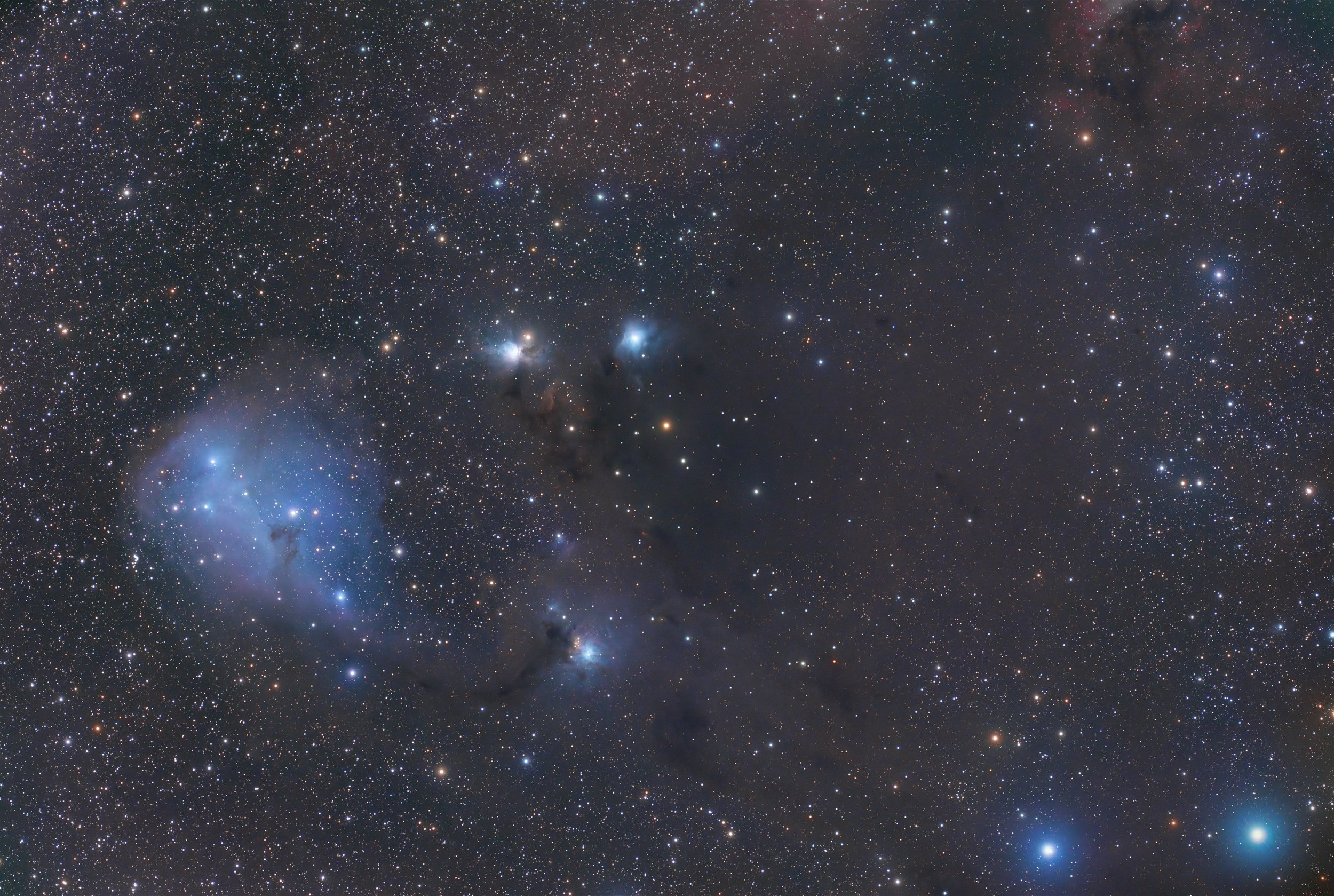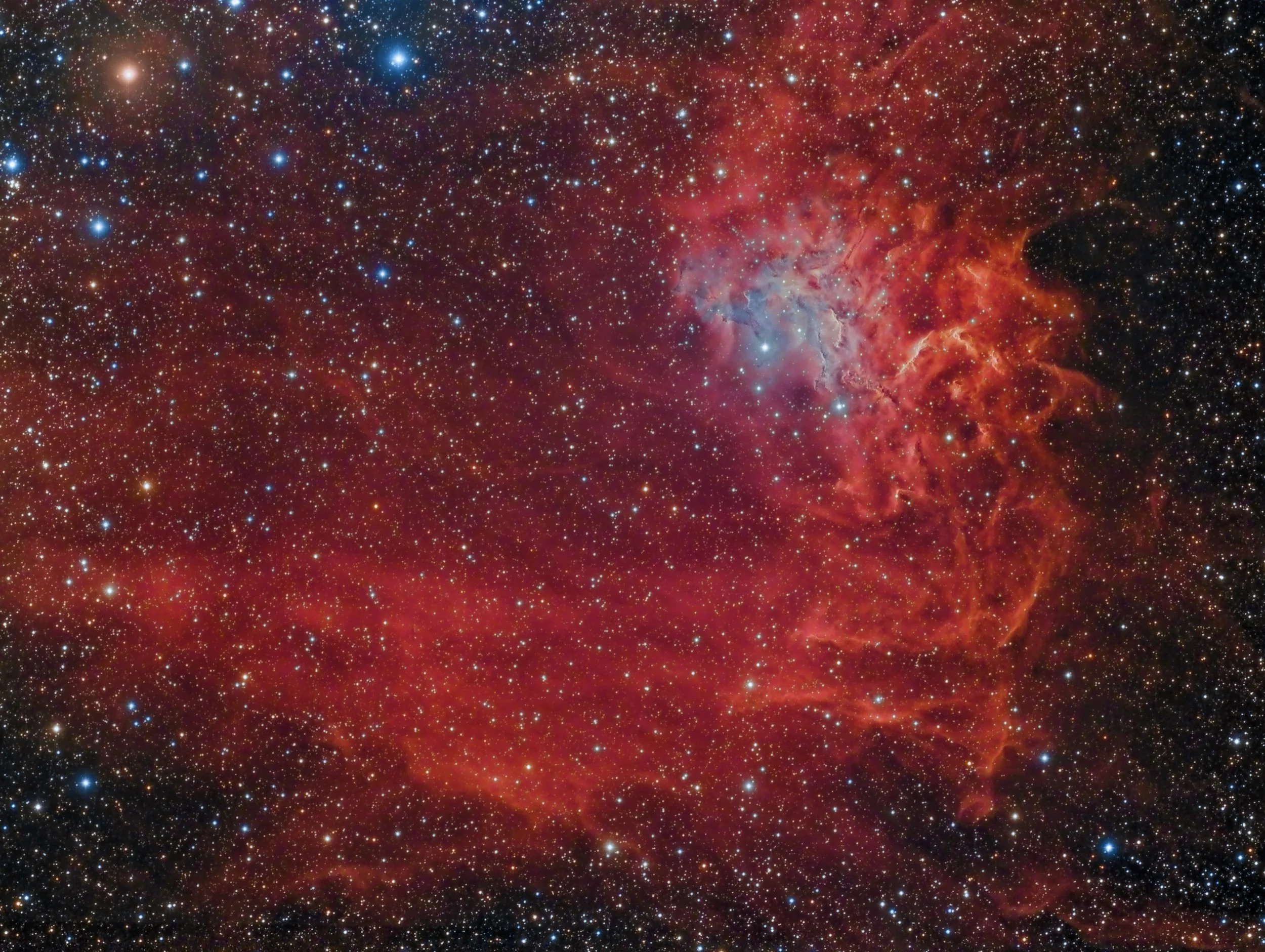
AAPOD2 Image Archives
Auriga's Heartbeat: Nebulae and an Ancient Cluster
his vibrant wide-field image captures two prominent emission nebulae in the constellation Auriga: the Flaming Star Nebula (IC 405) and the Tadpole Nebula (IC 410). IC 405 glows with the intense light of the hot star AE Aurigae, which energizes surrounding hydrogen gas, creating a fiery appearance. Nearby, IC 410 houses the "tadpoles"—dense, dusty structures sculpted by stellar winds from the young cluster NGC 1893.
The image combines over 20 hours of integration using both narrowband and broadband filters. The result is a richly detailed view blending structure, color, and contrast—highlighting the dynamic interplay of ionized gases and star formation within these celestial clouds.
IC 405 - FLAMING STAR NEBULA
Image Description and Details : Telescope: FSQ-106ED
Camera: QSI 583ws
Guide: EZG-60 - ZWO ASI 120 MC
Filters: BAADER LRGB, ASTRONOMIK H-ALPHA
Exposure: 42 x 10 MIN LUM, 11 X 5 MIN RED B2, 11 X 5 MIN GREEN B2, 11 X 5 MIN BLUE B2,10 X 10 MIN H-ALPHA
Software: MAXIM DL, PHOTOSHOP CC, PIXINSIGHT
Location: ESCOBAR DE CAMPOS, LEON (SPAIN)
Copyright: César Blanco
IC 405 (Caldwell31)
IC 405 (Caldwell31) is a diffuse nebula visible in the constellation of Auriga, located at 1630 light years from Earth. In its direction you can see AE Aurigae, a variable and mysterious star, according to some studies it would be a star born in the region of the Orion Nebula about 2.7 million years ago and then moved to the Milky Way from there.
IC 405 shines with the radiation received from AE Aurigae, which ionizes its gases (mainly hydrogen) and gives it a red color; the blue patches are instead due to the reflection of the blue light of the star on the dark dust. IC 405 appears to be connected with other nebulosity systems, in particular with IC 410, visible one degree to the southeast; in reality they are much more distant objects.




